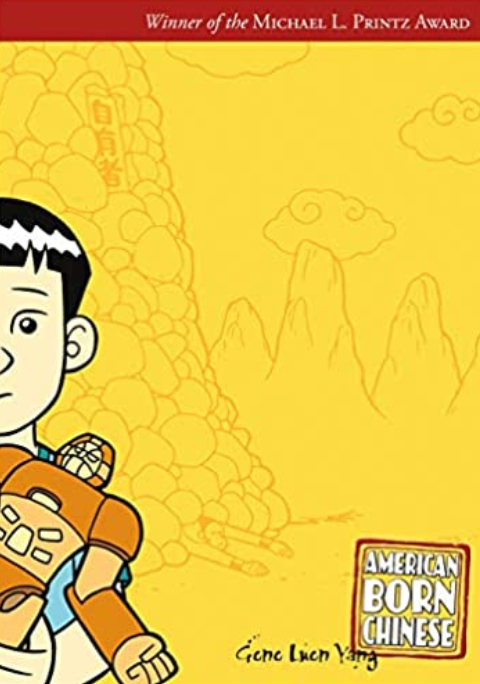
Graphic novels are multimodal, meaning they use multiple modes of expression. This assists and aids readers’ ability to envision and comprehend ideas, which is a critical literacy skill in this century. The multimodality graphic novels have made them manageable for students to read. This reduces text load overall, which diminishes readers’ anxieties that occur with print-based reading (especially in a classroom setting). The best part of graphic novels for readers, in my opinion, is they are engaging, positive, and applicable. Readers find it easier to relate as well. The visuals capture the readers’ interest and increase their motivation to keep reading. The graphic novel I chose to read was American Born Chinese by Gene Luen Yang. The themes throughout this graphic novel stood out to me as important, especially in this day and age. The first theme I want to touch upon is racism and pop culture. In a number of ways, the novel presents racism and the idea of being an outsider. Through television media, the convergence of racism and pop culture is shown. The second theme is identity and prejudice. In this novel, the lesson that when confronted with racism and prejudice, it is important to acknowledge your value and true identity. This is shown in the Monkey King and Jin’s experience where they were not allowed into the party in Heaven for not wearing shoes. A third theme presented in this novel [is that of] pride, stubbornness, and humility. The Monkey King and Jin shift from stubbornness to a state of humility, which portrays a change towards people who truly care about who they truly are. Those people can help the Monkey King and Jin grow stronger and significant communities in their worlds, where they do not have space for bullies. The final theme in this novel is storytelling and universality. This novel’s distinctive format uses three rare narrative techniques: visual illustrations with text, shifting amidst three interconnected stories, and mimicking the structure of a sitcom television show. This illustrates that the author is deeply aware of the value of telling different stories in a number of ways.
—Anonymous, CMRD101 Fall 2020
